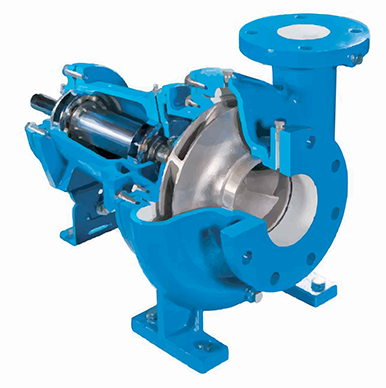Looking for an energy-efficient pump?

Pumps operate as part of a system. The amount of energy used by the system depends on the design of the pump, the design of the installation, and how the system is operated. These factors are interdependent and must be carefully matched to ensure the lowest energy and maintenance costs, longest equipment life and reliability.
Pumps and energy efficiency
Pumping systems are big energy users in industry. In some industrial operations, pumps consume as much as half of the energy used in the process. Even a small improvement in pump design or motor efficiency can add up to big savings for your business.
Think about the “second price tag”
A pump’s initial purchase price accounts for about 10 percent of its lifecycle costs. Energy and maintenance costs combined account for the lion’s share. Energy costs account for 40 percent or more.
You can use the U.S. Department of Energy's (DOE's) Pumping System Assessment Tool (PSAT), free of charge, to identify opportunities to improve energy efficiency.
Buying and operating tips
Pump types and applications vary significantly, so it is not always easy to know which model to buy. The following criteria can help you make the best choice.
Think efficiency.
Do not overemphasize price. Over a pump’s lifespan, its energy costs will exceed the purchase price. Shop for the most efficient units that can yield payback over the shortest periods of time.
Study the system.
A pump system is the sum of a number of component parts. If you use energy-efficient parts and design, you may be able to buy a smaller pump. For example, install low-loss pipe fittings and eliminate bottlenecks in piping systems.
Buy the right size for your needs.
Bigger is not always best. Choose a pump that can be operated near the optimum efficiency point at all times, and one whose impeller can handle future capacity increases.
A variable frequency drive can save money.
A variable frequency drive can reduce system losses, and is particularly cost-effective in systems with variable flow requirements.
Two pumps may be better than one.
Two smaller pumps can operate in parallel to do the job of one large pump. Shut off one pump during periods of low demand and reap the energy savings.
Use pump selection software.
Internet tools abound for choosing the right pump. Most follow a four-step approach that considers unit application, performance, efficiency and other factors.
Protect against wear.
Wear has a major effect on energy efficiency. Ensure pumps are well maintained by lubricating bearings, maintaining shaft seals, resetting wear ring clearances and smoothing the impeller and casing waterways.
Follow manufacturer recommendations.
Create and follow a regular schedule of maintenance based on the manufacturer’s recommendations.